

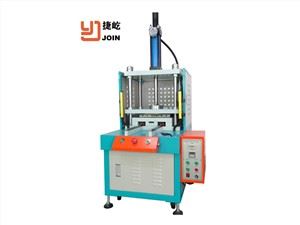
Hydraulic press machine. For various kind of press cut, press assembly, press bending, press forming and riveting
Read More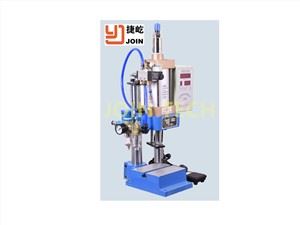
Pneumatic press machine ,air press machine.For various kind of press cut, press assembly, press bending, press forming and riveting
Read More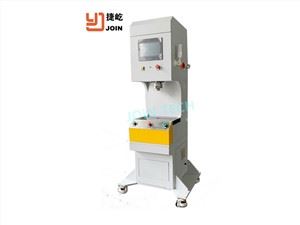
Servo assembly machine, For various kind mechanical parts precise assembly, forming and riveting.
Such as motor bearing assembly and stator press into motor case
Intelligent operation control, various press fitting, parameters settable.
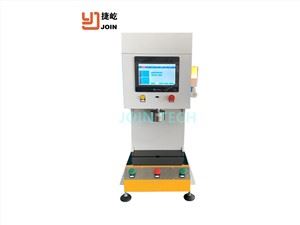
Precise servo press machine.For various kind of press testing, precise assembly, forming and riveting.
Such as motor shaft press into iron, commutator press into shaft.
Stator press into motor case, Bearing press into shaft and other bearing assembly.
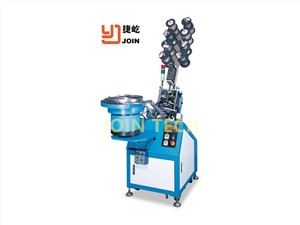
Automatic bobbin Pin insert machine. Various kind of bobbins that need to insert pins before winding wire. For example Transformer bobbin and solenoid bobbin
Read MoreWhy Choose Us
Professional Team
Our predecessor was the leader of Chinese mainland winding machine manufacturer OZMA. We have a group of professional team with more than 20 years of design and manufacturing experience in the industry of coil winding and motor winding.
Safety Assurance
JOIN Intelligent Technology quality management system has passed ISO9001 certification.
Our Product
Coil winding machine, motor winding machine, coil taping machine,soldering machine, welding machine, servo press machine and other automatic production line.
Complete After-Sale Service
Pre sales service: Confirm the winding technical then provide solution and quotation. On sales service: Keep touch with the buyer to make sure deliver the machine on time. After sales service: Overseas service, JOIN's engineers setup and test the machine in the buyer's plant, technical support and spare parts.
What is Hydraulic Press Machine?
A hydraulic press uses a hydraulic cylinder to produce a compressive force. Within a hydraulic press, there is a plate where the sample is placed to be pressed for sample preparation.
Types Of Hydraulic Press Machine
H-Frame Hydraulic Press
The frame, press cylinder, pump, and bolster are of “H” shape in this type of hydraulic press. This machine is used in repair shops, maintenance of buildings, and production assembly lines. They consist of hand pumps to apply low volume or air and electrical pumps when the operation is required. The pressure of this device is dependent on the size of the cylinders.
C-Frame Hydraulic Press
C frame or single column have body frame in the shape of C alphabet. It has a single arm structure with excellent rigidity, guide performance, speed, and exceptional precision. C shapes hydraulic press is best to use for minor operations and required limited floor space.
Four-Column Hydraulic Press
The design of such hydraulic presses have a two-cylinder design that depends on the requirement of the manufacturing process. This press has a central control system with semi-automatic cycling and adjustable pressure and compression speed. Four-column hydraulic can be used as any substantial force to any size of work.
Hydraulic Wheel Press
In this hydraulic press, a horizontal wheel is present, used for mounting and unmounting wheels, bearing gears, and sheaves onto and off of shafts, axles, rolls, or armatures. They work for the correction of shaft parts and pressing of shaft sleeve parts. For example, automotive, motors, electronics, mining, home appliance industries for precision.
What Are The Advantages Of Hydraulic Press Machine?
Lower cost: Hydraulic press machines are typically cheaper than mechanical presses due to their simpler design. This lower cost applies to both the initial purchase and ongoing maintenance. They have fewer moving parts, making them easier to maintain and repair.
Overload protection: Hydraulic presses have built-in overload protection. This means that if the press is built to withstand a certain load, there is no danger of damaging the tools or the machine due to overloading. Once the pressure level is reached, a relief valve opens to prevent surpassing that level.
Control: Hydraulic presses allow for precise control over press forces and speeds. The hydraulic system can convert a small amount of power into a large amount of force, making it easier to achieve the desired results. This level of control allows for accurate and consistent production.
Durability: Hydraulic presses are known for their durability and reliability. They do not break down as easily as mechanical presses, reducing downtime and increasing productivity. This durability is attributed to the simpler design and fewer moving parts.
Noise reduction: Hydraulic presses produce less noise compared to mechanical presses. The reduced number of moving pieces results in quieter operations. This not only creates a more comfortable working environment but also allows for better communication and concentration during the manufacturing process.
Versatility: Hydraulic presses can be used for a wide range of applications, including pressing, forging, stamping, and forming various materials. They are commonly used in industries such as metalworking, plastics processing, and woodworking. The different sizes, capacities, and configurations available make hydraulic presses adaptable to specific requirements.
High efficiency: Hydraulic presses offer faster operation speeds compared to other types of presses. This increased efficiency translates into higher productivity and shorter production cycles. Hydraulic presses also provide consistent and precise results, resulting in high-quality products.
Uses For A Hydraulic Press Machine
Compacting Food and Other Consumables
Compressed food products are packaged using hydraulic presses. Many popular meat and cheese products would not be possible without the use of hydraulic presses. The powder makes up and pills are often compressed using special hydraulic presses.
Tool Making
Hydraulic presses are often used when making tools. A Hydraulic Press Machine can be used to make or assemble electrical parts of a refrigerator or to seal a panel. Microwaves, dishwashers, and washing machines all require hydraulic presses to shape the panel and many of them require hydraulic presses for other uses.
Manufacturing Electrical Parts
A hydraulic press is often used in the manufacture of electrical equipment used in important electrical installations. The housings and switches found at switching stations and elsewhere are assembled using hydraulic presses. Thermostats that help keep our homes, and businesses at the right temperature are often manufactured using a pressurization process.
Making Ceramics
Hydraulic presses compress the particulate matter that forms the ceramic in its ceramic form. Ceramics see all kinds of uses; Powerful magnets help make the modern world possible in most forms of industrially manufactured clay product ceramics. Ceramics is used in body armor to keep soldiers and others safe in dangerous situations. Some super high tech fields such as semiconductors are actually entirely on ceramics.
Manufacturing Car Parts
Many parts of the automobile have been shaped using hydraulic presses. From clutches to gear and bearing assemblies, a hydraulic press also helps make the most important car parts possible. Simple products such as windshield wiper blades are also manufactured using hydraulic presses. Hydraulic presses are also used in more precise manufacturing applications such as fuel injection sensors. Hydraulic presses optimize many types of formation and operation.
Building Plane
Similarly with cars, the same or tailored parts of the aircraft are manufactured using hydraulic presses. Apart from things like windshield wiper blades and gear assemblies, even airplane body panels and wings are built using hydraulic presses.
Military Application
Hydraulic presses machines are used when loading shells and other ammunition-related tasks. Hydraulic shop presses are often located on Navy ships or even outside the military in merchant marines if emergency repairs are required. The Hydraulic Shop Press is located somewhere in each Air Force base. There are many other military applications ranging from building vehicle tires and tracking fuel cell compression.
What is Pneumatic Press Machine?
A pneumatic press, also known as an air press, uses the potential energy of compressed air to create force. Gas, usually nitrogen or regular air, is compressed within a cylinder to create pressure anywhere from 10 psi to 5,000 psi. This is then used to generate force, which can be used for a variety of different jobs, including assembly, riveting, punching, staking, stamping, and crimping, among others.
What Are The Advantages Of Pneumatic Press Machine?
Lower Costs to Purchase
A pneumatic press relies on a relatively simple operation compared to hydraulic presses and some hydropneumatic presses. For this reason, pneumatic presses tend to be much less expensive to purchase. This is one of the biggest advantages of a pneumatic press. Adding a pneumatic press to your shop won’t require nearly as much saving, or take as much out of your budget as a hydraulic press or hydropneumatic press.
Smaller Footprint
The pneumatic press’s relatively simple operation and function also has other benefits. If there are places in your shop that can be a tight squeeze or hard to get around, a pneumatic press might be ideal. Pneumatic presses tend to have a smaller footprint than hydropneumatic presses, and much smaller than hydraulic presses. This also makes them easier to move or relocate, which is especially handy if you see changes on the horizon for your shop.
Lower Costs To Maintain
Hydraulic presses require more maintenance compared to pneumatic presses. The addition of hydraulic fluid, and the accompanying components, can cause maintenance costs to add up quickly. They also require time and expertise to maintain properly, otherwise your investment will wear out prematurely which could result in unexpected downtime and non-conforming parts.
Easy To Use
Unlike a manual press, which requires more force from the operator and can result in repetitive stress injuries, a pneumatic press provides consistent force on its own, which makes it easier to use. A pneumatic press has fewer risks of repetitive stress injuries, and tends to be more comfortable to use compared to manual presses.
Plenty Of Power
Though a hydraulic press and a hydropneumatic press provide more press force than a pneumatic press, these presses are by no means weak. A pneumatic press can provide up to 5,000 lbs of force, which is more than enough for a variety of jobs.
The Working Principle of Pneumatic Press Machine
The heart of a pneumatic power press machine is the air compressor. This compressor, often powered by an electric motor, draws in atmospheric air, which is full of potential kinetic energy. It then compresses this air, increasing its potential energy significantly. The compressed air is subsequently stored in a tank, waiting to unleash its stored energy when required.
As the machine is activated, a control valve opens, and the compressed air rushes out due to its natural tendency to expand. This powerful rush of air moves into a cylinder, propelling a piston inside it. The piston's movement, driven by the expansion of the compressed air, is the driving force behind the pneumatic power press machine's operation.
This piston is intricately connected to the press's die or stamp. As the piston moves, it powers the die or stamp, which then applies the desired force onto the material being processed.The pneumatic power press machine has a wide range of applications, from bending and shaping to cutting and stamping, all of which are managed by the movement of a piston driven by compressed air.
The pneumatic power press machine stands out due to its adaptability. The machine's stroke can be adjusted in pressure, speed, and location to meet the specific needs of the job at hand. The ability to regulate both the air pressure and the amount of air evacuated from the tank contributes to this versatility. By varying these two factors, operators can easily control the power and speed of the press, making the machine incredibly versatile.
This flexibility, combined with the machine's quick setup, makes the pneumatic power press machine a real game-changer. It eliminates the need for long and intricate setup processes, saving valuable time in fast-paced industrial environments.
Moreover, the pneumatic power press machine stands out for its energy efficiency. Since it runs on compressed air, there is no need for complex electrical circuitry or fuel consumption, making it a more environmentally friendly choice. It also operates cleanly, without the production of waste or by-products, and more quietly than many other industrial machines. This lack of noise pollution, combined with its efficiency and versatility, makes the pneumatic power press machine a preferred choice in many industries, from automotive manufacturing to metal fabrication and more.
Components Of Pneumatic Press Machine
A pneumatic press consists of several key components. Each plays a crucial role in its operation.
Air Compressor: Generates compressed air. This is the core of the system, providing the necessary force.
Cylinders/Pistons: Convert compressed air into mechanical energy. They move to exert pressure or force as required.
Valves: Control the flow of air. These include directional control valves that guide air flow and speed controllers that adjust the velocity.
Actuator: Translates the energy into motion. Acts directly on the object being pressed or shaped.
Frame: Supports all other components. It must be robust to withstand pressure without bending or breaking.
Control System: Manages operations. Can be manual, semi-automatic, or fully automatic, enabling precise control over pressing actions.
Applications Of Pneumatic Press Machine
Automotive Manufacturing
In automotive assembly, pneumatic presses are vital for efficiently attaching parts such as bearings and bushings, leveraging their precision and force control to ensure high-quality assembly.
Electronics Industry
The electronics sector relies on the exact force provided by pneumatic presses for assembling small, delicate components in circuit boards or mobile devices, where consistency and controlled force are essential.
Metalworking
In metalworking facilities, pneumatic presses are employed for bending, punching, and shearing metal sheets. Their pressure adaptability allows for fine adjustments to work with various material densities and thicknesses.
Textile Companies
Pneumatic presses are used in the textile industry for cutting fabrics and applying prints or designs, offering accurate cuts and uniform design applications across different textiles.
Packaging Sector
These presses play a critical role in forming and sealing containers in the packaging industry, enabling uniform shaping of packages for food packaging or cosmetic products with precision.
Aerospace Engineering
The aerospace industry uses pneumatic presses for fabricating components, where the high reliability and precision of pneumatic technology meet the stringent standards required in aerospace component manufacturing.
Our Factory
Hangzhou JOIN Import;Export Co.Ltd is a subsidiary of JOIN TECH, who is mainly responsible for the export of products produced by JOIN TECH ,as well as the import and export of other related equipment, accessories, spare parts and raw materials.
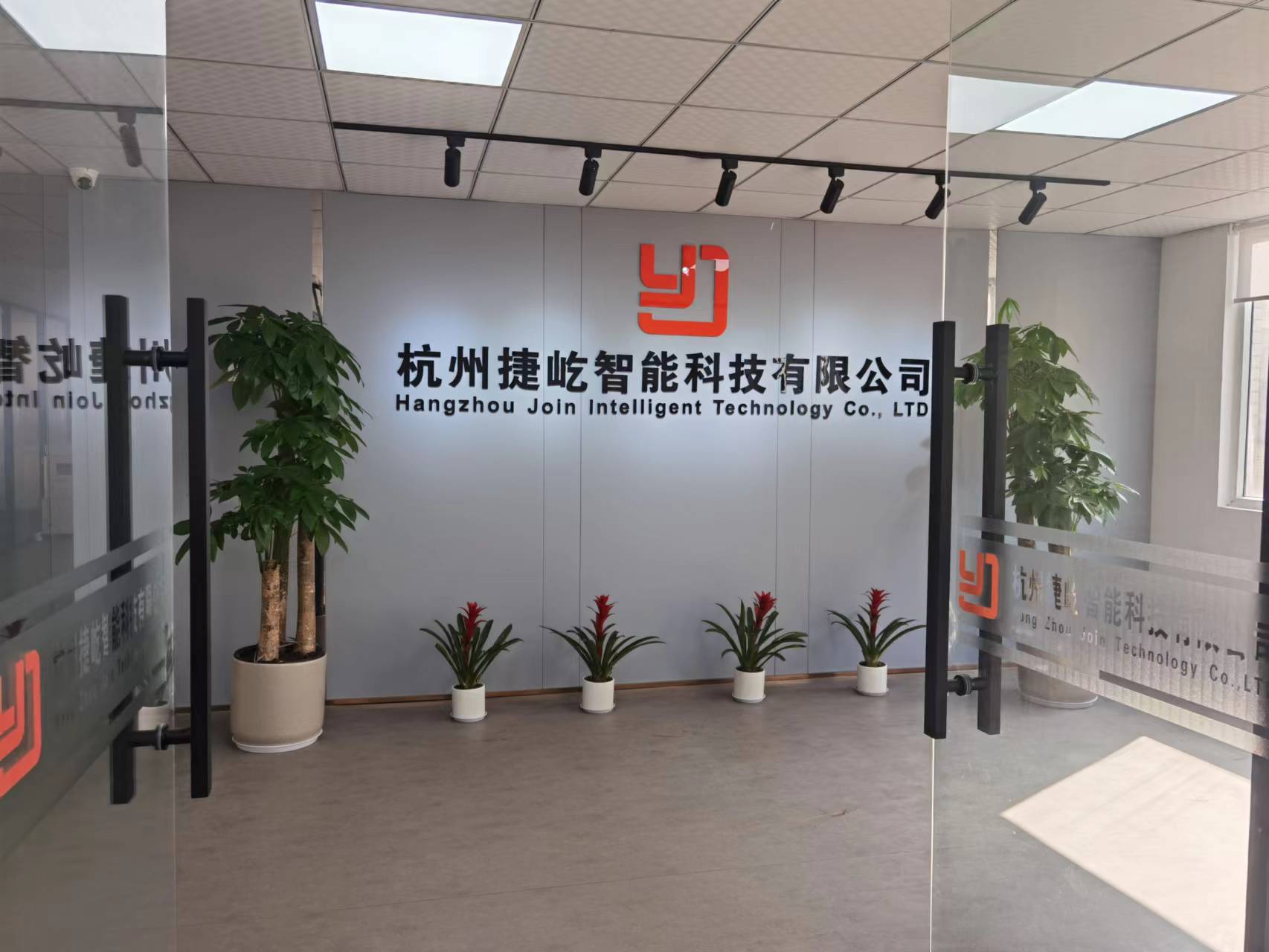
FAQ
What is an automatic press machine?
An automatic press machine is a computer-controlled device that automates the pressing process in various industries, including metalworking, plastics, and electronics assembly. It can perform repetitive tasks such as molding, forming, stamping, and assembling components with precision and speed.
What industries typically use automatic press machines?
Automatic press machines are widely used in automotive manufacturing, aerospace, consumer electronics, medical devices, and general engineering industries where precise and repeatable operations are crucial.
What is the purpose of a press machine?
Press machines can laminate decorative materials onto furniture panels, building partitions, wooden doors etc.Presses add pressure to laminates which can then be glued onto multiple surfaces including but not limited to wood, MDF and plywood.Hot presses are more effective.
What does a power press machine do?
Power presses are metalworking machines used primarily to cut, punch, or form metal using tooling (dies) attached to the slide (ram) and bed.The slide has a controlled reciprocating motion toward and away from the bed surface and at right angles to it.
What types of materials can an automatic press machine handle?
Automatic press machines can handle a wide range of materials, including metals (steel, aluminum, copper), plastics, composites, and textiles, depending on the design and configuration of the machine.
How to operate a press machine?
It is critical that the workpiece is centred on the piston. Next, slowly turn the leadscrew at the top of the press to bring the nose of the leadscrew onto the top of the workpiece. Now, use the handle to pump hydraulic oil into the piston and start applying a load. Continue pumping until the desired load is reached.
What is the press machine called?
Also known as a forming press, a machine press is a heavy-duty industrial machine that uses pressure to resize or reshape a workpiece.It's operated a worker, known as a toolsetter, who's responsible for securing the workpiece in place and engaging the press.
What maintenance is required for an automatic press machine?
Regular maintenance includes lubrication of moving parts, cleaning of the work area, inspection of safety features, and checking for wear and tear.Preventive maintenance schedules should be established based on the manufacturer's recommendations.
Can an automatic press machine be customized?
Many manufacturers offer customization options to meet specific application requirements. This could include special tooling, feed systems, sensors, and integration with other machinery or software.
What is the shut height of a press machine?
The shut height of an upright press is the distance from the top of the bed to the bottom of the slide with stroke down and adjustment up. The shut height must always be defined either from the top of the bed or from the top of the bolster.
What is the average cycle time of an automatic press machine?
Cycle times vary widely depending on the complexity of the operation and the machine's capabilities.Some high-speed machines can achieve cycle times in the milliseconds, while others may take several seconds.
What is the function of power press?
Power presses can be either mechanical or hydraulic. These machines are used for many industrial applications. They can perform different functions, including straightening, cutting, bending, and punching metal sheets.
What is the time and temperature for heat press machine?
for a manual heat press machine ,you only need to set the temperature 130-220 and time 8-25 s depend on what kind of paper you use.
How do I choose press machine capacity?
Secondly, the press capacity required to perform the manufacturing process should be considered. This depends on the size of the work stock, and the type of process. Another important factor while selecting a press machine tool is the length of the stroke over which the press delivers force.
How to operate a press machine?
It is critical that the workpiece is centred on the piston. Next, slowly turn the leadscrew at the top of the press to bring the nose of the leadscrew onto the top of the workpiece. Now, use the handle to pump hydraulic oil into the piston and start applying a load. Continue pumping until the desired load is reached.
What is the expected lifespan of an automatic press machine?
The lifespan of an automatic press machine depends on factors such as quality of construction, maintenance practices, and operating conditions.High-quality machines can last for decades with proper care.
Is electric press better than hydraulic press?
Hydraulic press machines have a faster approach speed compared to electric press but have slower ram acceleration and deceleration into positioning because of the oil-powered motor. Hence, the Electric press has a quicker output as it has a higher bending speed.
What are presses used for?
Presses are typically used to press two things together or press two things apart, such as bearings, other shaft fitted metal parts or to bend or straighten materials. Certain smaller presses, such as C-frame presses, can also be used to hold materials together during assembly or to disassemble parts for maintenance.
What are the advantages of a power press?
Power presses are highly efficient, capable of producing large quantities of components within a short period. This efficiency translates to increased productivity and improved bottom lines, making them an ideal solution for businesses seeking to maximize output.
What is the importance of press machine?
A power press machine is a machine which is used for cutting, shaping, blending and pressing any metal sheet into required shape. This is a multi-purpose machine used to shape the metal sheet to be used for getting the desired shape of the parts to be used in electric and electronic appliances, automobile industry etc.